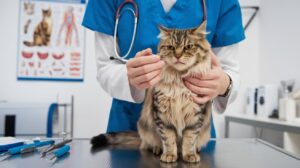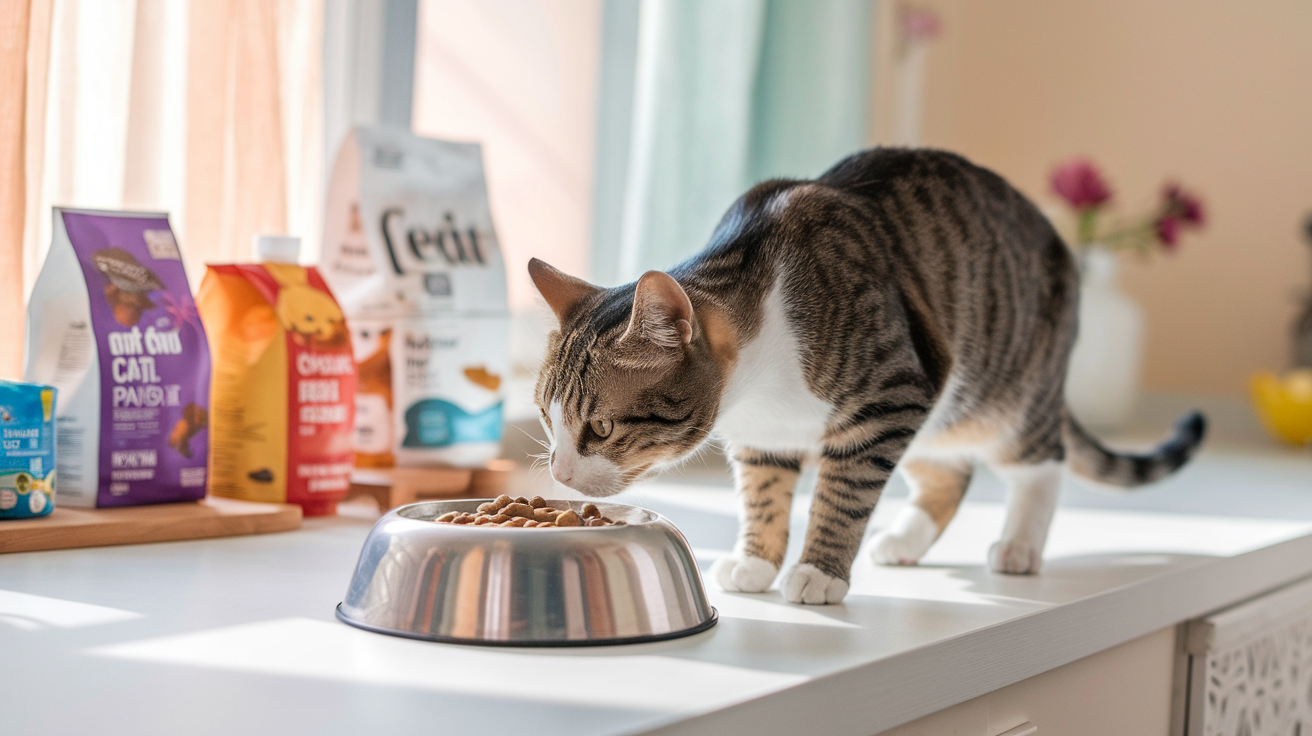Introduction
It’s not uncommon for cats to turn their noses up at wet food, leaving their owners puzzled and concerned. While cats are known for their picky eating habits, outright refusal of wet food can become a challenge, especially when you’re trying to provide them with a balanced, nutritious diet.
Wet food plays an essential role in a cat’s diet, as it not only provides key nutrients but also helps with hydration. Due to their naturally low thirst drive, cats rarely drink as much water as is necessary. Wet food can help counterbalance this by providing the moisture they might not get from drinking alone, supporting both their urinary health and overall well-being. Understanding the reasons behind a cat’s refusal of wet food can help ensure they receive the proper nutrition and stay hydrated.
Common Reasons Cat Does not Eat Wet Food
Texture Issues
One of the primary reasons cats may refuse wet food is due to texture issues. Cats can be highly sensitive to the texture and consistency of their food. Some cats might prefer food that is chunkier, while others may like smoother pâtés. If the texture doesn’t appeal to them, they may completely reject the meal, even if it’s packed with nutrients. Experimenting with different types of wet food textures can sometimes resolve this issue.

Temperature Preference
Temperature preference is another factor that can impact a cat’s willingness to eat wet food. Room-temperature food attracts many cats because it simulates the warmth of newly caught prey. If the food is too cold, straight out of the fridge, it might turn them off. Simply warming the wet food slightly can often make a big difference in whether they eat it or not.
Flavor Preferences
Cats can also be notoriously picky about flavors. Just like people, they have their own unique preferences. Some cats may dislike certain flavors or brands of wet food, while others may favor strong-smelling varieties like fish over poultry. If your cat refuses one flavor, switching to another might encourage them to eat.
Health Issues
Health issues, such as dental problems or illnesses, can also cause a sudden change in appetite. If a cat is experiencing pain while chewing, it may avoid eating wet food altogether. Similarly, illnesses that affect the cat’s sense of smell or cause nausea can lead to food refusal. Taking yourself to the veterinarian is necessary in these situations to rule out any underlying medical issues.

Sudden Changes in Diet
Lastly, sudden changes in diet can cause a cat to reject new food. Cats are creatures of habit, and switching their food too quickly can make them reluctant to try something new. Gradually introducing wet food by mixing it with their current diet can help ease the transition and make them more open to eating the new food.
How to Encourage Cats To Eat Wet Food
If your cat is refusing wet food, a gradual transition can be key to success. To begin, slowly include a small amount of moist food into their usual dry meal. Over time, you can slowly increase the ratio of wet food to dry, giving your cat time to adjust to the new texture and flavor. This method helps your cat become familiar with the wet food without causing stress or digestive upset.
Another simple yet effective strategy is to gently warm the wet food before serving. This can enhance its aroma, making it more appealing to your cat. Since cats rely heavily on their sense of smell when deciding what to eat, warming the food to room temperature or slightly warmer can make a big difference. Just make sure it’s not too hot to avoid burns.
Trying out various flavors and textures can also be beneficial. Cats have individual preferences, so trying a variety of brands, flavors, and textures—such as shredded, pâté, or chunks in gravy—can increase the chances of finding something your cat enjoys. If your cat turns down one type of food, don’t give up; there’s likely another option they’ll love.
Starting with small portions is another useful tactic. Offering large amounts of wet food all at once might overwhelm a cat, especially if they’re not used to it. By starting with smaller servings, you can help them feel more comfortable with the new food without wasting any. Once your cat shows interest, you can gradually increase the portion size.

Finally, if your cat continues to refuse wet food, it’s essential to check for any underlying health issues. Dental problems, gastrointestinal discomfort, or other illnesses can lead to changes in appetite. If your cat displays other signs of illness or if food refusal persists, consulting a veterinarian is crucial to address any health concerns and ensure your cat’s well-being.
When to Consult a Veterinarian
It’s important to consult a veterinarian if your cat shows any signs of illness, such as vomiting, diarrhea, weight loss, or lethargy. These symptoms, combined with food refusal, can indicate an underlying health issue that needs immediate attention. Cats are experts at hiding discomfort, so even subtle signs of illness should be taken seriously. A vet can perform a thorough examination to rule out conditions like dental disease, gastrointestinal problems, or other illnesses that may be affecting your cat’s appetite.
Additionally, if your cat has been refusing wet food for more than a few days, it’s time to seek professional advice. Prolonged food refusal can lead to nutrient deficiencies and dehydration, which can quickly affect a cat’s overall health. A veterinarian can help determine whether the food aversion is related to health problems, behavioral issues, or simply a dislike of the food. They can also suggest alternative diets or feeding strategies to ensure your cat receives the necessary nutrition.
Conclusion
Identifying the underlying cause of your cat’s refusal to eat wet food is crucial for their health and well-being. By understanding factors such as texture preferences, temperature, flavors, and potential health issues, you can take gradual steps to encourage your feline friend to enjoy their meals. Small changes, like mixing wet food with dry food or warming it slightly, can make a significant difference in their willingness to eat.
It’s essential to get veterinarian treatment if your cat continues to refuse wet food or shows symptoms of the disease. Persistent food refusal can lead to serious health problems if not addressed promptly. A veterinarian can provide valuable insights and recommendations to help get your cat back on track, ensuring they receive the nutrition they need to thrive. Remember, a happy and healthy cat is worth every effort!
FAQs
Why is my cat suddenly refusing wet food?
Sudden refusal of wet food can be due to various reasons, including changes in taste preferences, texture sensitivity, temperature, or health issues. It’s essential to observe any other changes in behavior or health and consult a veterinarian if the refusal persists.
How can I identify dehydration in my cat?
Signs of dehydration in cats include dry mouth, sticky gums, lethargy, decreased skin elasticity (when you gently pull up the skin on the back of their neck), and reduced urine output. If you notice these signs, it’s important to encourage your cat to drink more water or consult a vet.
Is it common for cats to be picky eaters?
Yes, many cats can be picky eaters. Their preferences can vary based on flavor, texture, and temperature. It’s important to experiment with different options to find what your cat enjoys most, but be patient, as it may take some time to identify their favorites.
How can I get my cat to eat wet food?
To transition your cat to wet food, mix a small amount of wet food with their regular dry food, gradually increasing the wet food portion over several days. By introducing the new texture and flavor gradually, you may assist your cat get used to it without dominating them.
When should I consult a veterinarian about my cat’s eating habits?
If your cat refuses to eat wet food for more than a few days or shows signs of illness (such as vomiting, diarrhea, weight loss, or lethargy), it’s crucial to consult a veterinarian. They may help in figuring out whether any underlying medical conditions require attention.
